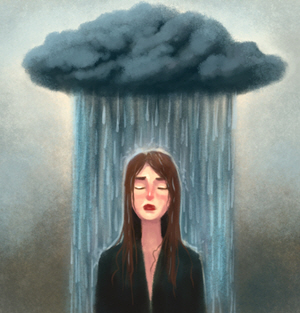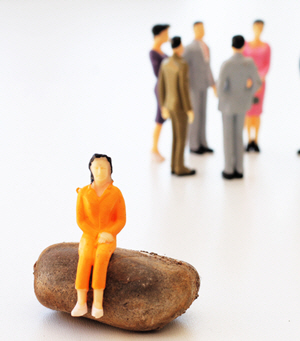 Sadness is a natural part of life. It’s not the most welcomed emotion, but it is a normal response to upsetting situations. Circumstances, sickness, and even stress can cause us to feel sad.
Sadness is a natural part of life. It’s not the most welcomed emotion, but it is a normal response to upsetting situations. Circumstances, sickness, and even stress can cause us to feel sad.
Have you felt the weight of sadness at a loved one’s funeral? What about a disappointment at work, did you feel sad then? Bad news from the vet about a beloved pet could lead you to sad feelings.
Often, people search for a reprieve from the uncomfortable emotion. Solace can come in the form of a loving embrace, a much-needed laugh, or spending time alone. In most situations, the heavy sad feeling subsides in a matter of days, weeks, or months depending on the situation. Once the blow of the circumstance has passed, emotions return to normal.
Keep in mind that each of these situations warrants sadness. A loved one passes on and you are expected to feel sad. This is a normal response. In addition, it’s a temporary response where you learn how to incorporate the loss into your life.
 Aren’t sadness and depression one in the same, though?
Aren’t sadness and depression one in the same, though?
No, they’re not. Among the many differences, sadness is an emotional response whereas depression is an illness.
What’s to be done when the dark cloud fails to lift from atop your head? When sadness has started to infiltrate most of your life. You’re not quite sure where the heavy feelings originated, but they are undoubtedly weighing you down. Waiting for the feeling to pass has become exhausting and seemingly hopeless.
How can you tell if your sadness is simply too much sadness and is actually depression?
Recognizing the Symptoms of Depression
One of the key components to recognizing depression is in its time frame. Sadness is a temporary, reactive response. It usually lifts in a couple of weeks. Depression is a long-term state of mind, not just reactive. It could extend for months and years if left untreated.
Depression can also be filled with unjustified guilt that can’t be relieved. The unending sadness is debilitating enough in itself. Guilt sometimes finds its way to merge the hopelessness and sadness into a blame game, though. It’s a cruel cycle that doesn’t typically end without professional help.
Review some of the symptoms of depression:
Physical
- Headaches (migraines seem to worsen if previously experienced)
- Chest pain (most commonly a dull ache or squeezing, but also a burning, stabbing, or sharp sensation)
- Digestive problems (feel queasy or nauseous, experience diarrhea or constipation)
- Feeling fatigue (unable to feel rested)
- Sleeping issues (suffer insomnia or sleep too much)
- Significant change in appetite and weight (eating a lot more or less, weight has severely increased or decreased)
- Back pain
- Muscle aches and joint pain
Emotional
- Feelings of hopelessness (no light at the end of the tunnel)
- Unwarranted guilt (experiencing guilt for the way you’re feeling)
- Constant Irritability (moodiness)
- Social withdrawal (no longer interested in socializing with people)
- Outbursts of anger (rage-filled fits)
Mental
- Loss of interest in things previously enjoyed (hobbies or pleasures)
- Low self-esteem or feelings of inadequacy
- Inability to concentrate or make decisions
- Extreme pessimism
- Suicidal thoughts (thoughts of harming yourself)
Most of us will experience these symptoms at some point in life. While usually explained by physical illness or a current situation, there are times when these symptoms cannot be explained. In these instances, please consider depression to be the culprit.
A professional can identify the indicators of depression and chart a course for treatment. If you think you’re suffering from too much sadness, please contact me for a free consultation to discuss your symptoms.
My counseling approach involves weaving together different modes of intervention to create change. We will work together according to your needs to alleviate your depression. If you have any questions or would like to learn more about my approach, please contact me.


